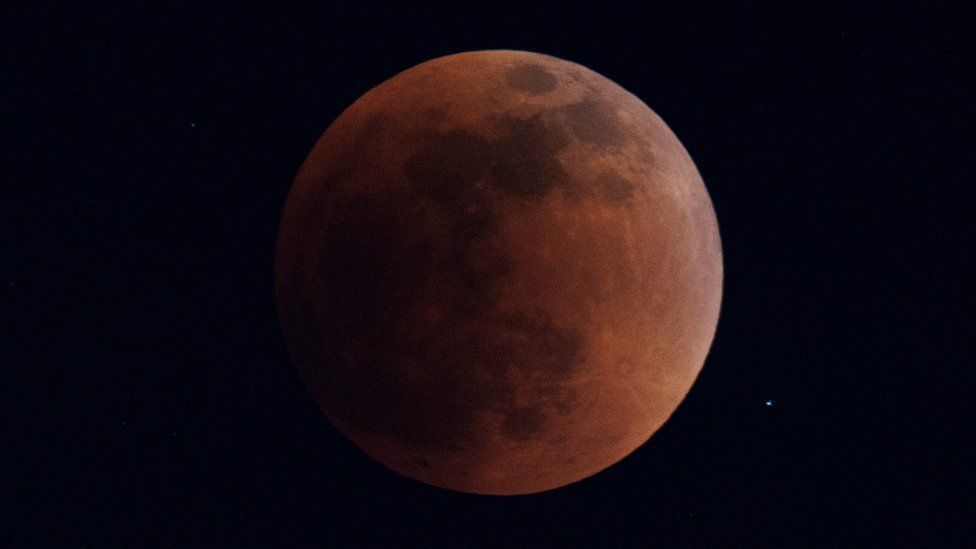
© REUTERS via BBC
Vocabulary:
I will read the words, meanings, and sample sentences. Then, repeat after me.
- crimson /KRIM-zuhn/
- engulf /en-GUHLF/
- orbit /AWR-bit/
- congregate /KONG-gri-geyt/
- connotation /kon-uh-TEY-shuhn/
[adjective] – having a dark, deep red color
Leaves turn crimson in the fall season.
[verb] – to surround and cover something or someone completely
According to the reports, the fire engulfed nearly the entire neighborhood.
[noun] – the curved path through which objects in space move around a planet or star
The spaceship will enter orbit around the Earth once it has reached space.
[verb] – to gather together into a large group
Many cats congregate in the park near my house.
[noun] – a feeling or idea that is suggested by a particular word although it need not be a part of the word’s meaning, or something suggested by an object or situation
The word “proud” can have a negative connotation.
Article reading:
Please read the whole article. Then, I will check your pronunciation and intonation.
The moon glowed crimson after a total lunar eclipse was observed on Monday, May 16. The moon was entirely engulfed in the Earth’s shadow at the time, temporarily making it a deep hue of dark red. Lunar eclipses are frequently referred to as “blood moons” because of this. Coincidentally, a supermoon transpired: This is when the moon seems larger than usual when it is at the closest point in its orbit to the Earth. Stargazers witnessed the super blood moon from 03:29 GMT when the full lunar eclipse began and became visible in the Western hemisphere. In Greece, spectators congregated near Athens at the Temple of Poseidon to observe the moon before the total eclipse. The phenomenon was only visible for a portion of that period in Europe due to the moon beginning to set. However, places in the Americas with clear skies captured the complete spectacle.
Although total lunar eclipses occur only twice a year, the Old Farmer’s Almanac predicts seven more full moons in 2022:
June 14: Strawberry moon
July 13: Buck moon
August 11: Sturgeon moon
September 10: Harvest moon
October 9: Hunter’s moon
November 8: Beaver moon
December 7: Cold moon
These are Native American tribes’ names for the monthly full moons that have become prominent. Because a full moon has varied connotations for different ethnic groups month to month or season to season, the names differ from tribe to tribe.
Although total lunar eclipses occur only twice a year, the Old Farmer’s Almanac predicts seven more full moons in 2022:
June 14: Strawberry moon
July 13: Buck moon
August 11: Sturgeon moon
September 10: Harvest moon
October 9: Hunter’s moon
November 8: Beaver moon
December 7: Cold moon
These are Native American tribes’ names for the monthly full moons that have become prominent. Because a full moon has varied connotations for different ethnic groups month to month or season to season, the names differ from tribe to tribe.
Discussion Questions:
I will read each question. Then, please answer them.
- How often do you see eclipses?
- How do the moon cycles affect you? (e.g., your mood, your routine, etc.)
- How would you feel if you witnessed the super blood moon?
- Does your country have festivals or holidays based on the moon cycles?
- In your opinion, why do people enjoy watching phenomena in the sky?
Summarization
Please summarize the whole article using your own words and expressions. You will have one minute to prepare before you answer.
Describe:
Please explain the definition of each word listed below based on your understanding. You can provide example sentences if needed.
- hue
- transpire
- spectator
- phenomenon
- prominent